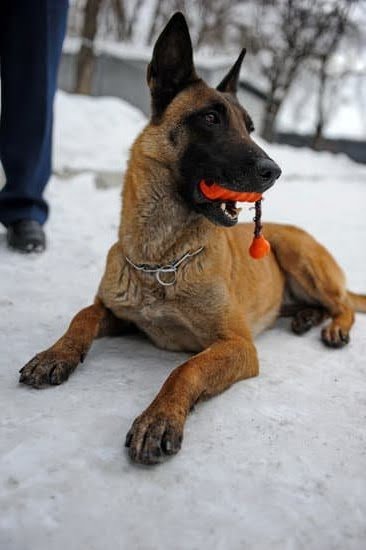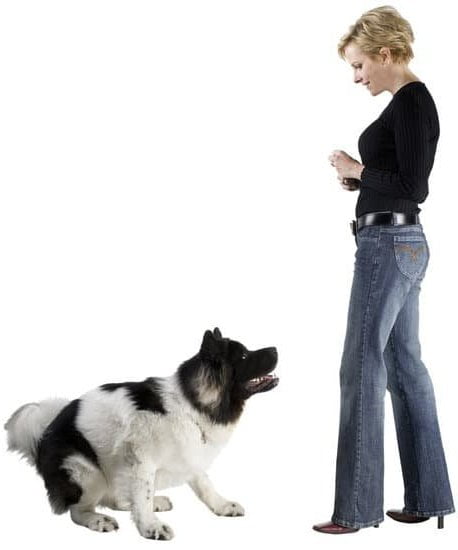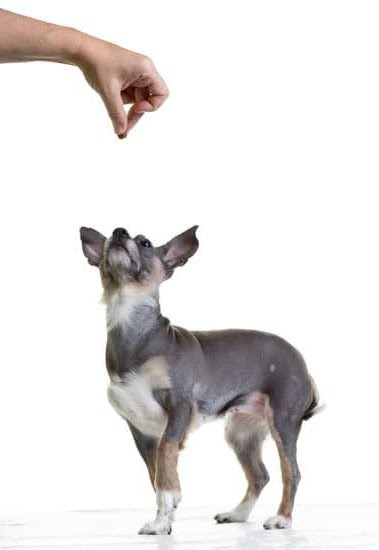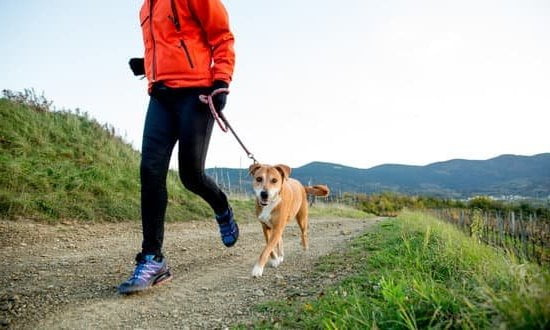Introduction
Dogs have a natural instinct to chew, just like humans do. Chewing is essential for a healthy dental routine, and it helps them release pent-up energy. It gives them something to do when they are bored and can provide an outlet for stress relief. Unfortunately, dogs don’t know the difference between what they should and shouldn’t chew on, so it is important as owners to establish parameters and teach them what they may and may not chew on.
When training your dog to stop chewing, there are several steps you can take. Establishing rules right away will be helpful in getting your pup on the right track: provide appropriate toys for playtime or reward positive behavior with treats; if your pup begins to nibble something that isn’t allowed, give him or her a firm “No!”; distract your pup with another activity; limit opportunities for misbehavior by giving notice that when you leave the room it is time to stay out of trouble; practice different methods of verbal commands like repeating “No” while pointing at the item they mustn’t chew on; use pup-proof locks around dangerous areas or home items; provide plenty of exercise outside in order to prevent boredom biting; be consistent with both discipline and reward; lastly, never shout at or hit your dog as punishment for chewing – this could make him anxious or scared which won’t help things.
Overall, remember patience is key! Dogs learn from consistent training from their owners. Eventually with enough repetition and reward, your pup will understand which toys are theirs and what items should not be chewed upon.
Reasons for Chewing
Chewing can be a common cause of frustration for pet owners who have dogs. It’s important to recognize that your pup may be engaging in this behavior for multiple reasons. Dogs will chew when they are bored and lack stimulation, when they are anxious or stressed, or when the object is new and interesting to them. Even puppies will explore their environment through chewing.
To overcome this challenging behavior it helps to understand why the dog is chewing and preventing it from occurring. Making sure the environment is enriched with toys and resources that keep your pup engaged is a great preventative measure. Another would be to distract pup with something else every time he begins to chew things that he shouldn’t like furniture, clothing etc.. Also, providing positive reinforcement can help discourage such behaviors and encourage good ones such as chews that are dog-friendly and safe. Training sessions should provide consistent cues so the pup understands which items can’t or shouldn’t be chewed on, while also providing leadership and making use of rewards when proper behaviors are enacted. Finally, if your pup suffers from anxiety issues then talking with an animal behaviorist may be necessary in order to address any underlying emotional issues that could contribute to destructive behavior like chewing.
Reinforcing Good behaviour Through Positive Training Techniques
One of the most important dog training tips to stop your dog from chewing is by reinforcing good behaviour with positive training techniques. Start off by rewarding your dog for not engaging in the undesired behaviour. If you catch them in the act, offer a better alternative such as chew toys or redirect their attention to another behavour. Keep your commands consistent and using positive reinforcement in all settings will help your pup learn quicker and retain the desired behaviour. Training with treats can be effective but don’t forget to praise them with lots of verbal and physical affection too. Take some time to teach desirable behaviours such as fetch, offer and sit; allowing them opportunities to practise those instead of chewing on something they shouldn’t when they feel bored or anxious. Gradually increase distractions while they are mastering each skill as this helps keep their attention focussed on you during training sessions rather than being tempted by objects around them. Additionally, remain patient and consistent with a calm attitude – always rewarding good behaviour whilst discouraging inappropriate activities like chewing furniture or shoes!
Setting Firm Boundaries
The first step to effectively curbing your dog’s bad chewing habits is to establish firm boundaries and rules that the both of you can follow. Show your dog that their behavior is unacceptable by giving them a firm “No” when they start to chew on something they shouldn’t, such as furniture or other household items. Additionally, make sure that there are no easily accessible objects in the house that your dog may be tempted to chew on; move expensive furniture out of reach, cover electrical cords with tape, and provide plenty of appropriate chew toys for your puppy.
If your pup does take a forbidden item, calmly remove it from their mouth without allowing for any more playtime with it. Once you’ve removed the object from them, replace it with one of their chew toys and praise them for making the switch. Make sure to always reward good behavior by offering treats or verbal praise when they abide by the rules. Also, don’t forget to keep punishments short and sweet — give your pup clear direction and then move on so they aren’t over-disciplined. With consistency, patience and time, teaching dogs effective behavior consistently is achievable!
Redirecting Unwanted Chewing Habits with Distraction Methods
When attempting to stop a dog from chewing, the main objective should be redirecting their attention away from the unwanted behavior. Whenever a dog begins to chew on something they should not, immediately offer them an alternative item that is safe for them to chew on. A great way to do this is offering a toy or rawhide that has been designed specifically for chewing as an acceptable replacement. When giving your pet the new toy, make sure to be consistently enthusiastic in order to keep their excitement levels up. Your pup will associate their new toy with positive reinforcement and may eventually become distracted enough by it that they forget all about the original object they were trying to chew on. If persistent, provide your pup with constant supervision while they are playing with their new toy and reward them with verbal praise whenever you see signs of appropriate behavior. With time and consistent practice, your pup can learn what is acceptable for them to chew on and start ignoring inappropriate objects altogether!
Exercising Your Dog’s Mind and Body
Dog training is an important part of pet ownership and it is vital that dogs learn to respond to commands in order to keep them safe, healthy and well-behaved. A good training routine will focus on both exercising the mind and the body of your dog.
When working on stopping chewing, mental exercises are key to providing your dog with an appropriate channel for their natural curiosity and eliminating negative behavior related to chewing. Start by teaching basic obedience commands such as “sit”, “down”, “stay” and “come” which can help redirect their focus away from things they may feel tempted to chew or mouth. You can also hide treats or puzzle toys around the house for your dog to find, allowing them to search for something rewarding in a productive way.
Physical exercise is essential for keeping your pup fit and happy; taking them on regular walks gives them consistent stimulation while also helping tire out their body at the same time. In addition, agility courses provide an engaging mental challenge as they adjust their movement accordingly while racing through tunnels or navigating ramps with ease. Working with an experienced trainer can ensure that you are getting the most out of these activities while still being mindful of any health problems that may arise among younger puppies. When kept up properly, a good doggy training routine will result in a strong connection between you and your furry companion!
Alternatives to Unpleasant Chewing
Dog chew toys are an excellent alternative to unpleasant chewing. Chew toys give your pup something to direct their energy into that won’t be destroyed by the teething process. Toys designed specifically for dogs should appeal to their natural instinct to chew and can often keep them occupied for hours. If you see your pup beginning to chew on furniture, shoes or other household items, interrupt the behavior with a noise followed by rewarding them with one of their favorite toys. Replacing the pleasant feeling of destructive chewing with the pleasure of getting a special toy will remind your pup what is acceptable and help retrain them from continuing this behavior. You may also find it helpful to provide several types and sizes of dog chew toys so that your pup has plenty of alternatives during different situations. Lastly, never underestimate the power of positive reinforcement when it comes to training dogs – praising and rewarding good behavior will always go a long way in improving any unwanted habits!
Conclusion
Training your dog to stop chewing successfully requires consistency, patience, and a positive attitude. Start by teaching your dog what is off-limits by giving them some chew toys or items they can sink their teeth into so they know what is acceptable to chew. You should also establish basic obedience commands such as sit and stay. These commands will help you better control the situation when your dog attempts to chew something like furniture. Every time your pup chews on an inappropriate item, provide them with a verbal correction and then move them away from the object while giving them a command like “no” or “leave it.” Lastly, be sure to reward good behavior such as leaving objects alone or not chewing. Praise, rewards and even treats go far in positively reinforcing good behaviors that override negative behavior. With consistent practice and patience, you’ll be able to train your pup to stop chewing furnture, shoes and other things, quickly!

Welcome to the blog! I am a professional dog trainer and have been working with dogs for many years. In this blog, I will be discussing various topics related to dog training, including tips, tricks, and advice. I hope you find this information helpful and informative. Thanks for reading!





